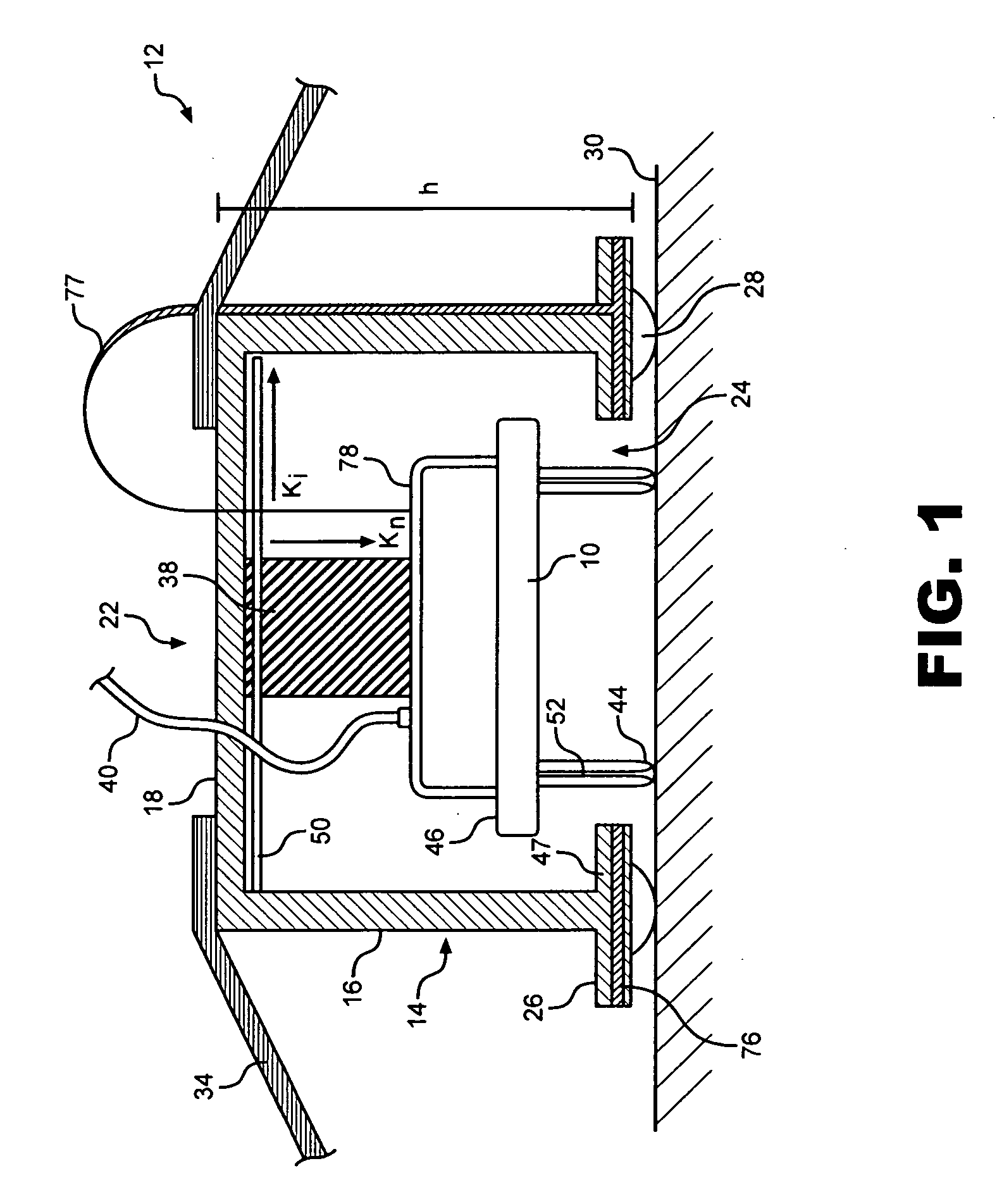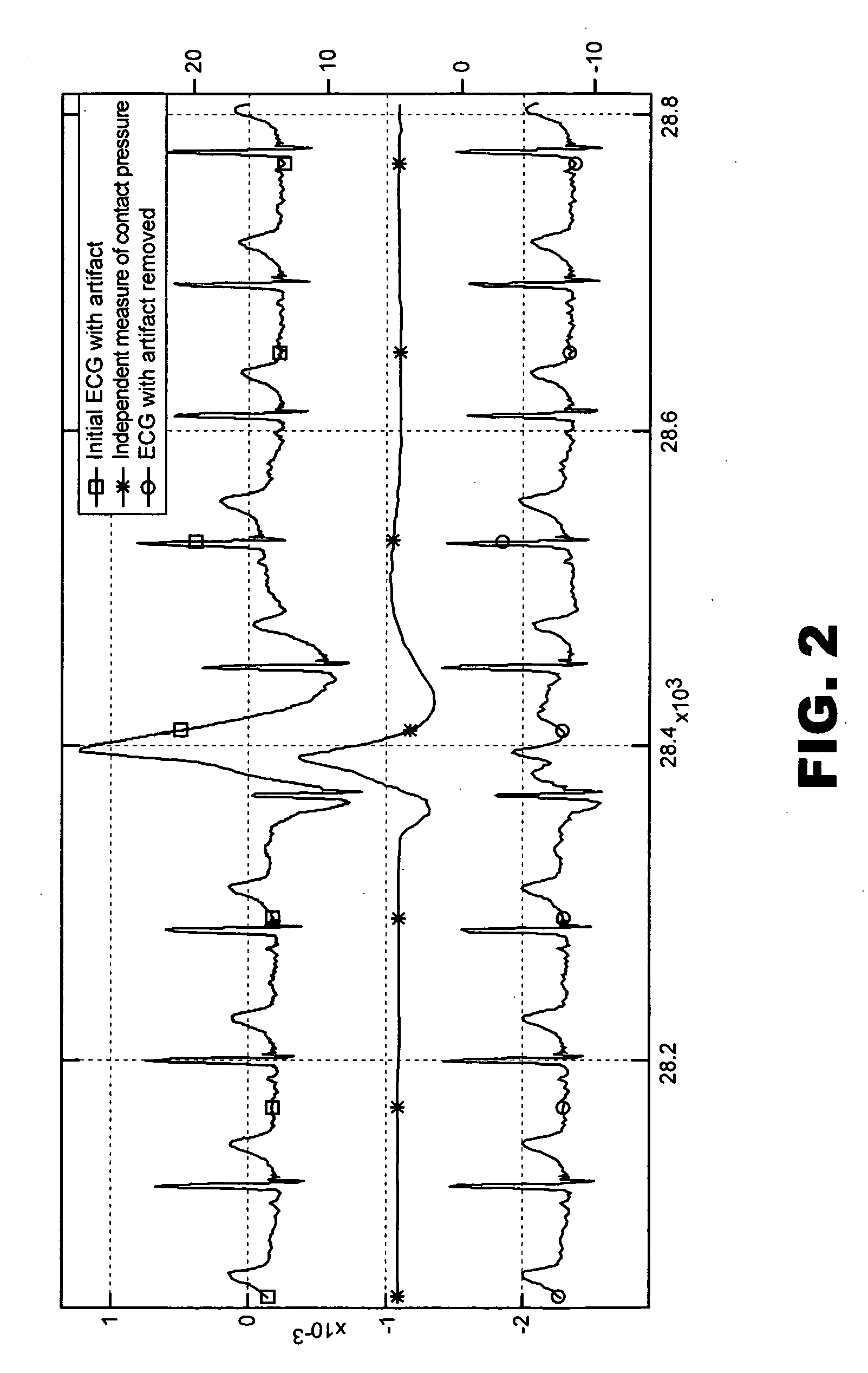Sensor mounting system
a technology of mounting system and sensor, which is applied in the field of holding a sensing device, can solve the problems of limiting the stretching that can lead to electrical measurement artifacts, and achieve the effects of limiting the stretching, accurate specification, and higher level of fidelity
- Summary
- Abstract
- Description
- Claims
- Application Information
AI Technical Summary
Benefits of technology
Problems solved by technology
Method used
Image
Examples
Embodiment Construction
[0027]With initial reference to FIG. 1, a sensor mounting system for optimally coupling a sensor 10 to a living subject is shown and generally designated 12. Mounting system 12 includes a main body portion 14 having at least one side wall 16 and a top wall 18, which together define a housing 22 having an opening 24. In a preferred embodiment, main body portion 14 is in the form of a short cylinder including extension stops 26 extending therefrom and having an interface layer 28 that forms the predominant contact to a surface 30 (i.e., skin) of a living subject. A secondary support structure 34 provides a mechanical force that holds mounting system 12 to surface 30. Secondary support structure 34 can be straps, or other means might be used, such as a spring arm or an item of clothing for supporting and positioning mounting system 12. Further, the connection between main body portion 14 and secondary support structure 34 can be made at two fixed points, as shown in FIG. 1, at three or...
PUM
 Login to View More
Login to View More Abstract
Description
Claims
Application Information
 Login to View More
Login to View More - R&D
- Intellectual Property
- Life Sciences
- Materials
- Tech Scout
- Unparalleled Data Quality
- Higher Quality Content
- 60% Fewer Hallucinations
Browse by: Latest US Patents, China's latest patents, Technical Efficacy Thesaurus, Application Domain, Technology Topic, Popular Technical Reports.
© 2025 PatSnap. All rights reserved.Legal|Privacy policy|Modern Slavery Act Transparency Statement|Sitemap|About US| Contact US: help@patsnap.com



